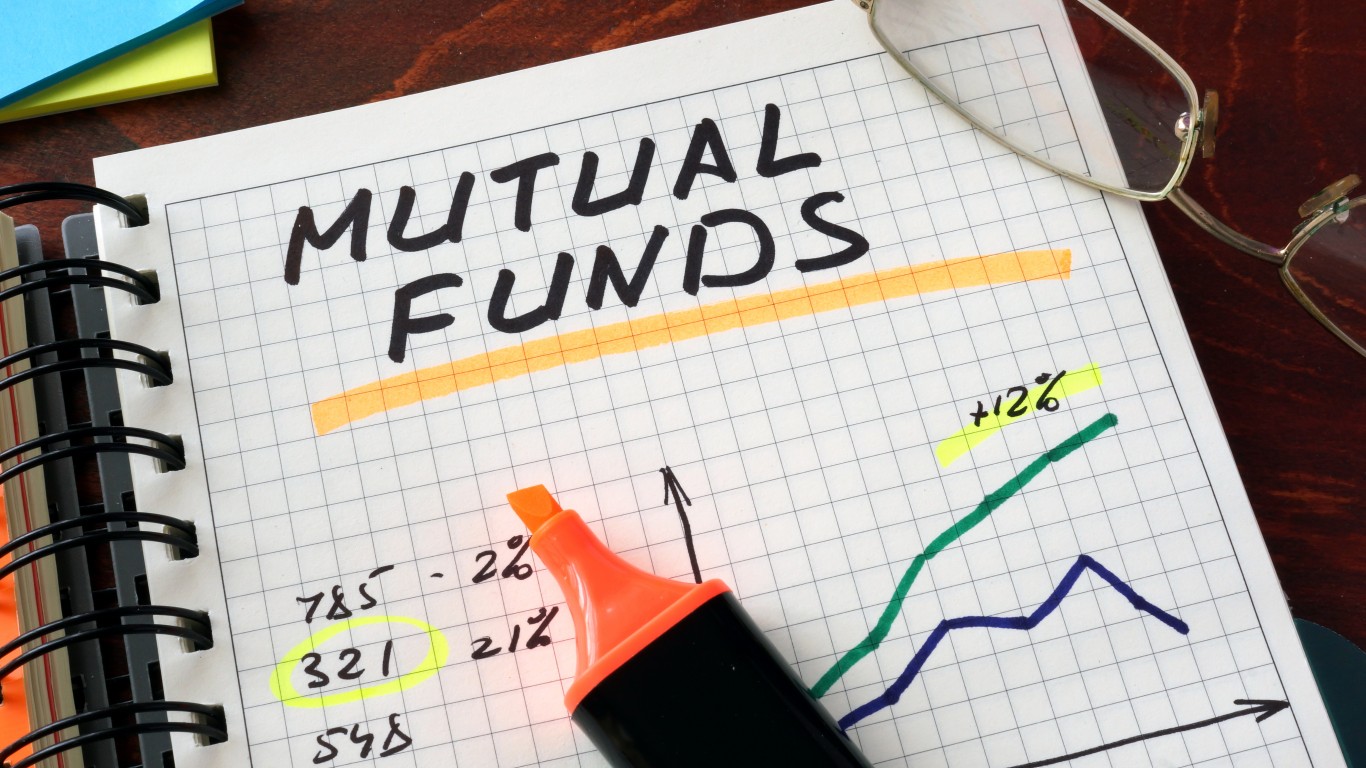Investing
5 Guaranteed Investment Ideas for Baby Boomers Who Absolutely Can't Afford to Lose Any Money

Published:

While getting to retirement age can be a blessing and a curse, the reality is that counting on the U.S. government to provide for your needs is not the best idea. The full retirement age is 66 if you were born from 1943 to 1954. The full retirement age increases gradually if you were born from 1955 to 1960 until it reaches 67. For anyone born in 1960 or later, full retirement benefits are payable at age 67.
The stock market is way overbought after two years of 20% gains for the S&P 500.
The Magnificent 7 stocks may be starting to slow down, and they have led the charge.
While artificial intelligence will lead us into the future, it may be ahead of itself now.
Is your portfolio vulnerable to a big stock market sell-off? Why not meet with a financial advisor near you for a complete review? Click here to get started today. (Sponsored)
The “buy the dip” financial news teleprompter readers and the 35-year-old portfolio managers who have never seen a market crash are pounding the table that stocks are still going to the moon. Market veterans and “hey boomer” professionals have seen this show before. In 1987, the Dow Jones industrials plunged a stunning 22% in one day. Today, an equivalent drop in the venerable index would be almost 9,400 points.
A market crash, though devastating, is workable if you are in your 40s and making peak money. However, for baby boomers who have enjoyed unprecedented gains over the past 35 years, being overweight to the stock market now is like picking up nickels in front of a bulldozer, and it could be a fatal shock to their retirement savings. Five very safe ideas make sense for those in their 60s or older who need to protect their hard-earned money that will help pay for a comfortable future.

Look at the short end of the Treasury market. The two-year note, like all Treasury debt, is guaranteed by the full faith and credit of the United States and yields a solid 4.20%. The shorter 6-month T-bill yields 4.30%. Note that shorter government debt of a year and less is bought at a discount and matures at full value instead of paying interest. They work the same way if you had a savings bond as a kid. Treasury bills and bonds can be bought through banks and brokerage firms.

Certificates of deposit (CDs) are insured by the Federal Deposit Insurance Corporation (FDIC), an independent agency that protects deposits in U.S. banks. The FDIC insures up to $250,000 per depositor per insured bank. In other words, you can have multiple CDs at different banks, which all have up to $250,000 in insurance.
The best current rates for a one-year CD were at 4.40%. Longer-term CD yields range from 4% to 4.80% with a minimum $500 deposit. It’s important to remember that many banks will charge a penalty for an early withdrawal of funds, so if you have an emergency and have to get at your money, you may receive less back than you put in. Make sure the terms are clear when you purchase one.

A high-yield money market fund is an investment that aims to generate income while keeping the principal relatively stable and liquid. It is considered a low-risk investment and can have higher interest rates than savings accounts. Money market funds invest in short-term securities, such as government securities, commercial paper, and corporate debt. They are intended to be safe and not lose value. Best of all, you can withdraw cash from a money market fund without penalties. In addition, they pay interest monthly and are insured by the FDIC up to $250,000.
Here are the rates from some well-known companies:

Unlike open-end mutual funds, ETFs trade on major exchanges like stocks. They own financial assets such as stocks, bonds, currencies, debts, futures contracts, and commodities such as gold bars. One massive advantage ETFs have is that they can be bought or sold anytime the markets are trading. In addition, there is a large market and demand from investors for exchange-traded funds.
One of the funds we recommend at 24/7 Wall St. is the SPDR Bloomberg 1-3 Month T-Bill ETF (NYSE: BIL). The fund invests substantially all, but at least 80%, of its total assets in the securities comprising the index and in securities that the Adviser determines to have economic characteristics substantially identical to the financial characteristics of the securities comprising the index. The index measures the performance of public obligations of the U.S. Treasury that have a remaining maturity of greater than or equal to 1 month and less than 3 months.
The fund currently pays a 5.03% yield, with a monthly dividend /interest payment of $0.3828. Investors need to know that the price of the ETF will go down by that amount when the dividend is paid, but trading at $91.47 at the time of this writing, that is a tiny amount.

An “open-end mutual fund” is a type of investment fund that allows investors to buy or sell shares at any time, based on the current Net Asset Value (NAV) of the fund, essentially meaning new shares are created when investors want to buy in, and shares are redeemed when investors want to sell out, providing continuous liquidity compared to closed-end funds with fixed entry and exit points; this makes open-end funds highly accessible for investors to enter and exit as needed.
Closed-end and open-end funds both provide efficient ways to invest. Closed-end funds trade on exchanges throughout the day, while open-end funds are typically redeemed or bought at net asset value once per day.
We recommend the BlackRock Liquidity Funds – FedFund (BFCXX), which currently yields 4.30%. The fund maintains a $1 net asset value and can be bought and sold daily.
The Blackrock website says this when describing the fund.
FedFund invests at least 99.5% of its assets in cash, U.S. Treasury bills, notes, and other obligations issued or guaranteed as principal and interest by the U.S. Government, its agencies, or instrumentalities, and repurchase agreements secured by such obligations or cash. The yield of the Fund is not directly tied to the federal funds rate. The Fund invests in securities maturing in 397 days or less (with certain exceptions), and the portfolio will have a dollar-weighted average maturity of 60 days or less and a dollar-weighted average life of 120 days or less. The Fund may invest in variable and floating rate instruments and transact in securities on a when-issued, delayed delivery or forward commitment basis.
Our 4 Favorite February High-Yield Stock Picks All Pay 7% and Higher Dividends
Thank you for reading! Have some feedback for us?
Contact the 24/7 Wall St. editorial team.